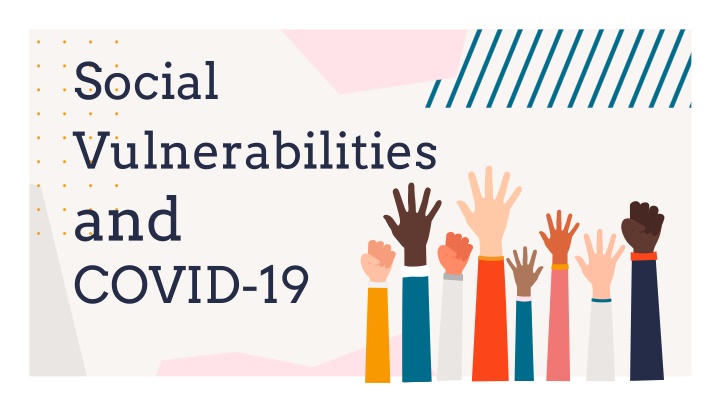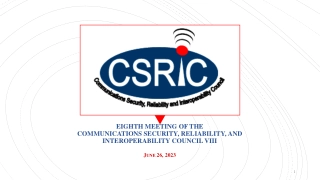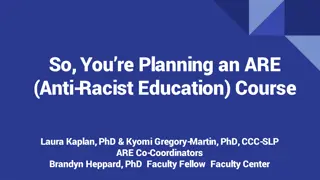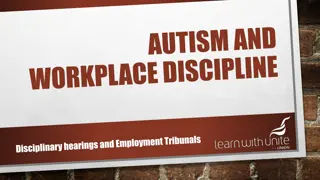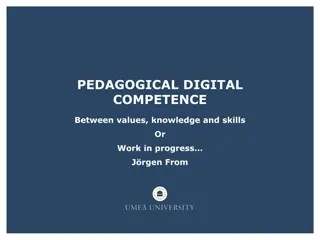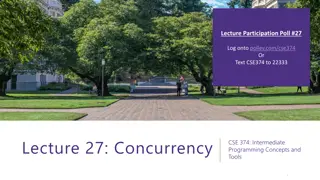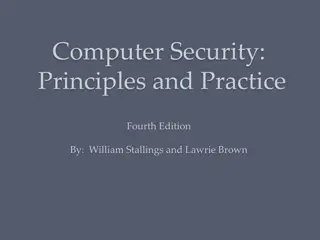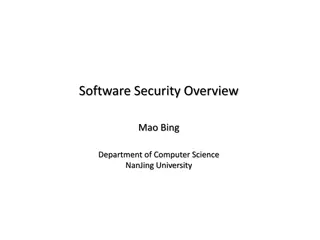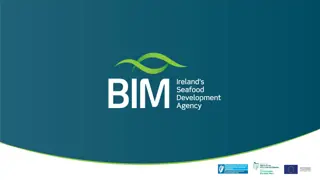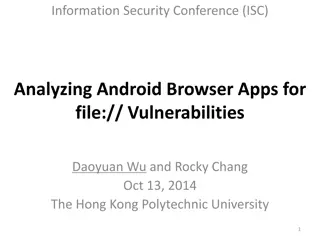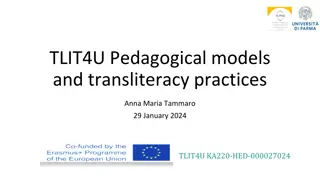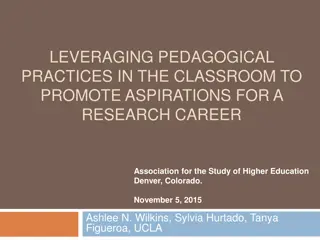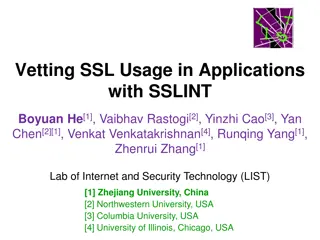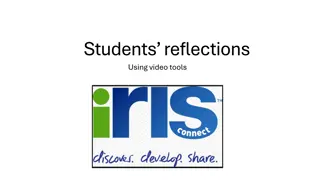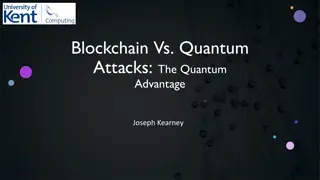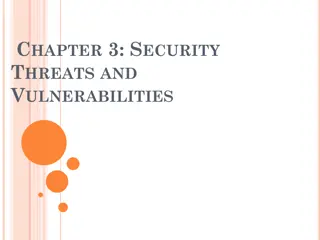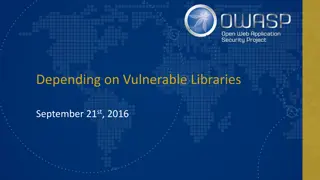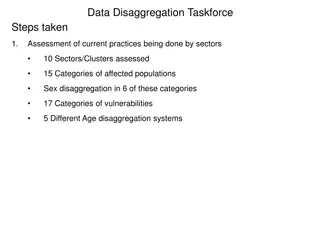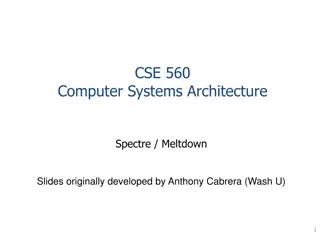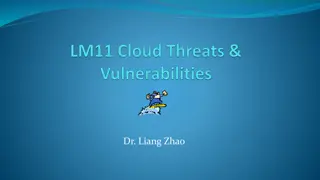Social Vulnerabilities & COVID-19 Pedagogical Insights
This resource guide delves into instructional components for exploring health disparities, social determinants of health, and proposing policy solutions related to COVID-19. It includes strategies, activities, and discussion prompts to engage students effectively in socioscientific issues. The guide aims to enhance students' critical thinking skills and understanding of societal complexities linked to the pandemic.
Download Presentation

Please find below an Image/Link to download the presentation.
The content on the website is provided AS IS for your information and personal use only. It may not be sold, licensed, or shared on other websites without obtaining consent from the author.If you encounter any issues during the download, it is possible that the publisher has removed the file from their server.
You are allowed to download the files provided on this website for personal or commercial use, subject to the condition that they are used lawfully. All files are the property of their respective owners.
The content on the website is provided AS IS for your information and personal use only. It may not be sold, licensed, or shared on other websites without obtaining consent from the author.
E N D
Presentation Transcript
Social Vulnerabilities and COVID-19
Teacher Resource Guide This guide provides insight into the decisions we made, and the benefits we believe students procure from these pedagogical and instructional components. As with any curriculum activity, it is only effective if it is fitting the needs of your classroom and your students. Therefore, we include several instructional strategies to make the curriculum meaningful in your classroom. How to use the guide This resource is for the Social Vulnerabilities & COVID-19 Instructional strategies are in blue text. These are possible ways to implement the activities. Green text points out the connection to socioscientific issues (SSI) and the skills being developed. Tips in red are discussion prompts to help facilitate discourse around topics. In this activity, students use scientific evidence to identify health disparities, investigate social determinants of health, and propose policy solutions related to a Covid-19 case study. Students will gain an understanding of challenges that some people may face in accessing COVID-19 testing sites by illustrating these challenges in a storyboard. In the Take Action activity, students will write a letter to a local representative about a COVID-19 issue that matters to them.
Agenda Objective: Use scientific evidence to identify health disparities, investigate social determinants of health, and propose policy solutions relations to a COVID-19 case study. 01 02 03 04 Teacher Prep Interpret Data & Construct Storyboard Reflection Write a letter proposing policy solutions 3
Teacher Prep When students engage in an open-ended discussion around the data presented in Table 1, misconceptions of race as a biological/genetic construct may surface. To be prepared to address these ideas and counter them with evidence, please watch the following videos ahead of time or together with your class as you see fit. 1. Race Conscious Medicine: A Reality Check (2 min): https://www.youtube.com/watch?app=desktop&v=FlqQ4qvqcL8&ab_channel=The Lancet 2. Measuring Genetic Variation Between Groups (2 min): https://www.racepowerofanillusion.org/videos/measuring-genetic-variation- between-groups 4
Vocabulary Health disparity Health disparity (CDC, 2020) preventable differences in the burden of disease, injury, violence, or opportunities to achieve optimal health that are experienced by socially disadvantaged populations. Populations can be defined by factors such as race or ethnicity, gender, education or income, disability, geographic location (e.g., rural or urban), or sexual orientation. Health disparities are inequitable and are directly related to the historical and current unequal distribution of social, political, economic, and environmental resources. Social determinants of health Social determinants of health (CDC, 2021) conditions in the places where people live, learn, work, and play that affect a wide range of health and quality- of life-risks and outcomes. 5
CDC Table and Figure Why does racism not race increase COVID-19 risk? Answer: Systemic racism has resulted in policies that limit access to healthcare and resources for marginalized groups. (See teacher prep slide for more information) Students connect scientific data to social factors that affect COVID-19 health risk. 6
Questions Describe any trends you notice in Table 1 and Figure 1. Answers may vary. Possible answers could include: American Indian, Asian, African American, and Latino persons are at increased risk for COVID-19 cases, hospitalization, and death compared to white persons. As social vulnerability increases, COVID-19 deaths increase overtime. Name 2-3 social factors that might impact these trends. How do you think each social factor may contribute to increased risk for COVID-19? Answers may vary. Social factors may include: racism, access to healthcare, socioeconomic status, housing type, frontline worker increase risk for COVID-19 death, transportation, household composition. (Ex: Being a frontline worker results in exposure to more people who could be infected with COVID-19 and therefore increases COVID-19 exposure) 7
Case Study Laura is a 35-year-old woman and identifies as Latina. She is a single mother of two young children and lives in a multi-family, Spanish-speaking household. During the day, Laura takes the public bus to a local restaurant where she works. Ever since her children s school closed at the beginning of the pandemic, Laura has struggled to find childcare for her kids while she is at work. After work, Laura usually goes to the public library to use their computers as she does not have one at home, but the library is currently closed due to Covid-19 restrictions. She learned at work today that her co-worker tested positive for Covid-19. Her boss has asked her to take time off work to get a Covid-19 test, although she is an hourly worker and does not qualify for paid sick leave. The closest testing center is 15 miles away from her house. 8
Social vulnerabilities are highlighted if students need additional help. Case Study Laura is a 35-year-old woman and identifies as Latina. She is a single mother of two young children and lives in a multi-family, Spanish-speaking household. During the day, Laura takes the public bus to a local restaurant where she works. Ever since her children s school closed at the beginning of the pandemic, Laura has struggled to find childcare for her kids while she is at work. After work, Laura usually goes to the public library to use their computers as she does not have one at home, but the library is currently closed due to Covid-19 restrictions. She learned at work today that her co-worker tested positive for Covid-19. Her boss has asked her to take time off work to get a Covid-19 test, although she is an hourly worker and does not qualify for paid sick leave. The closest testing center is 15 miles away from her house. 9
In order to get a Covid-19 test from a testing center, there are multiple steps that an individual must take from finding a testing center (first step) to receiving the physical test (final step). Working with a partner, brainstorm 3-5 steps and reflect on challenges that Laura may face for each step given her situation. Consider the location of the testing center, transportation, language, and other factors that would make access to a testing center more difficult. We recommend that students complete the storyboard activity in pairs or small groups. If students are having difficulty brainstorming steps, they can exchange ideas with another group. 10
Create a Storyboard Storyboarding is a visual representation of a narrative, these are often used by book authors and film directors/writers. It is a way to organize thoughts. Using what you know about Laura s situation, the data we just analyzed, and your personal experiences, illustrate a sequence of events Laura will have to go through to get her COVID test. 1. 2. 3. Write the step Laura is completing. Draw a picture representing that step. Describe the challenges Laura will face completing that step. 11
Consider the location of the testing center, transportation, language, and other factors that would make access to a testing center more difficult. The first step has been done for you. (If you are struggling, watch this video for ideas) Answer the questions when you are done. 12
Class Storyboard Step 1: Find a COVID-19 testing Center Step 2: Step 3: Challenges: Laura does not have access to a computer at home and the library is currently closed due to the pandemic. Challenges: Challenges: Step 4: Step 5: Step 6: Challenges: Challenges: Challenges: Final Step: Laura receives a COVID-19 test. 13
Classroom Reflection 1. Share your storyboard with another group of students. How were the steps you chose the same or different? 2. Is there anything you would change or add to your storyboard? 3. In this activity, you determined challenges some people may face in accessing a COVID-19 testing site. Other than access to COVID-19 testing sites, can you think of 2 other issues that may impact health related to COVID-19? 14
Take Action Activity 15
Working independently, write a letter or email to your local government to educate them about an issue that matters to you and advocate for proposed solutions. STEP 1: Research your issue STEP 1: Research your issue Find evidence from reliable sources to back up your claims. (Ex: Center for Disease Control (CDC), World Health Organization (WHO), Johns Hopkins Coronavirus Resource Center, State or County Health Departments) STEP 1: Choose a recipient of your letter STEP 1: Choose a recipient of your letter You can look up your federal, state, and local officials here: https://www.usa.gov/elected-officials STEP 2: Write your letter STEP 2: Write your letter The template can help you structure your letter. Take a position on an issue and offer your solutions. Remember that kindness goes a long way when you are asking for support. STEP 3: Send it STEP 3: Send it Look up your elected official s contact information. Usually, they will have a website or email where you can send your letter online. Alternatively, you can mail your letter to their office address. 16
Alternatives to Writing a Letter Other possible Take Action activities could include a social media or poster campaign. Similar to the letter activity, students select a target audience (i.e. their classmates, their parents/families, community members, specific organizations) and outline solutions for their chosen COVID-19 issue. 17
